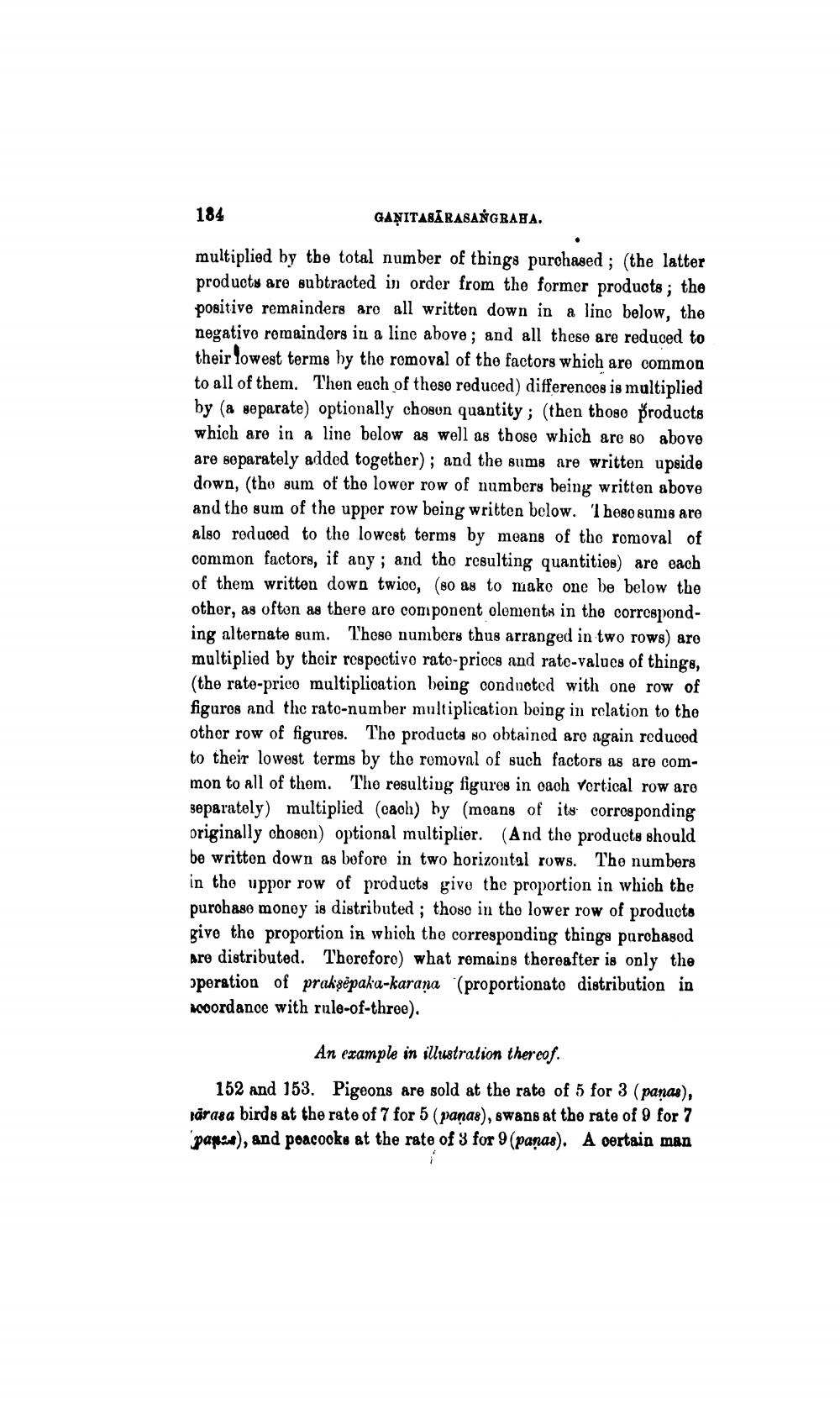________________
184
GANITASĀRASANGRAHA.
multiplied by the total number of things purchased ; (the latter products are subtracted in order from the former products; the positive remainders are all written down in a line below, the negative remainders in a line above; and all these are reduced to their lowest terms by the removal of the factors which are common to all of them. Then each of these reduced) differences is multiplied by (a separate) optionally choson quantity ; (then thogo Products which are in a line below as well as those which are so above are separately added together); and the sums are written upside down, (the sum of the lowor row of numbers being written above and the sum of the upper row being written below. Theso sums are also reduced to the lowest terms by means of the removal of common factors, if any; and the resulting quantities) are each of them writton down twioo, (80 as to make one be below the other, as often as there are component elements in the corresponding alternate sum. These numbers thus arranged in two rows) are multiplied by their respective rato-prices and rate-values of things, (the rate-prico multiplication being conducted with one row of figuros and the rato-number multiplication being in relation to the other row of figures. The products so obtained aro ngain reduced to their lowest terms by the removal of such factors as are common to all of them. The resulting figures in oach Vertical row are separately) multiplied (cach) by (moans of its corresponding originally chosen) optional multiplier. (And the products should be written down as before in two horizontal rows. The numbers in the uppor row of products give the proportion in which the purchase money is distributed; those in the lower row of products give the proportion in which the corresponding things parohased are distributed. Therefore) what remains thereafter is only the operation of praksepaka-karana (proportionato distribution in scoordance with rule-of-three).
An example in illustration thereof. 152 and 153. Pigeons are sold at the rate of 5 for 3 (panas), Farasa birds at the rate of 7 for 5 (panas), swans at the rate of 9 for 7 pan.), and poacooks at the rate of 3 for 9 (panas). A certain man




